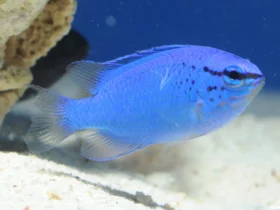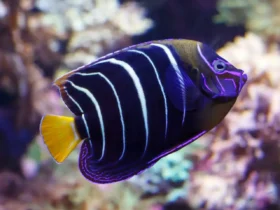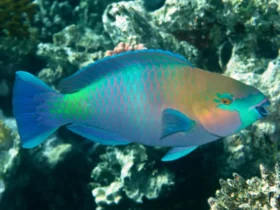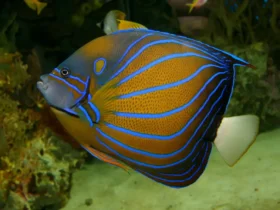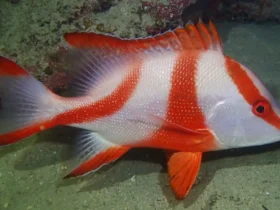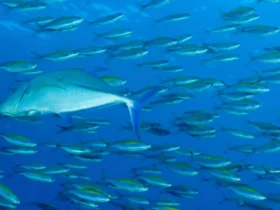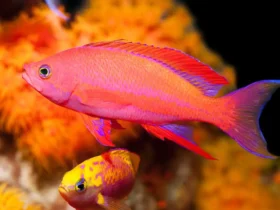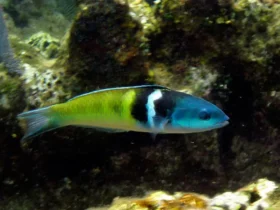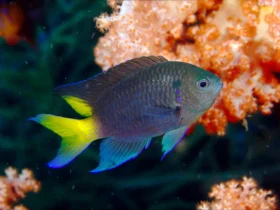The Moorish Idol (Zanclus cornutus) is a strikingly beautiful fish known for its distinctive shape, vibrant colors, and graceful movements. Found in the warm tropical waters of the Indo-Pacific region, this mesmerizing creature has captured the hearts of divers, snorkelers, and aquarium enthusiasts with its exotic appearance. In this article, we will explore the fascinating world of the Moorish Idol, delving into its characteristics, habitat, and the unique role it plays in coral reef ecosystems.
Moorish Idol images




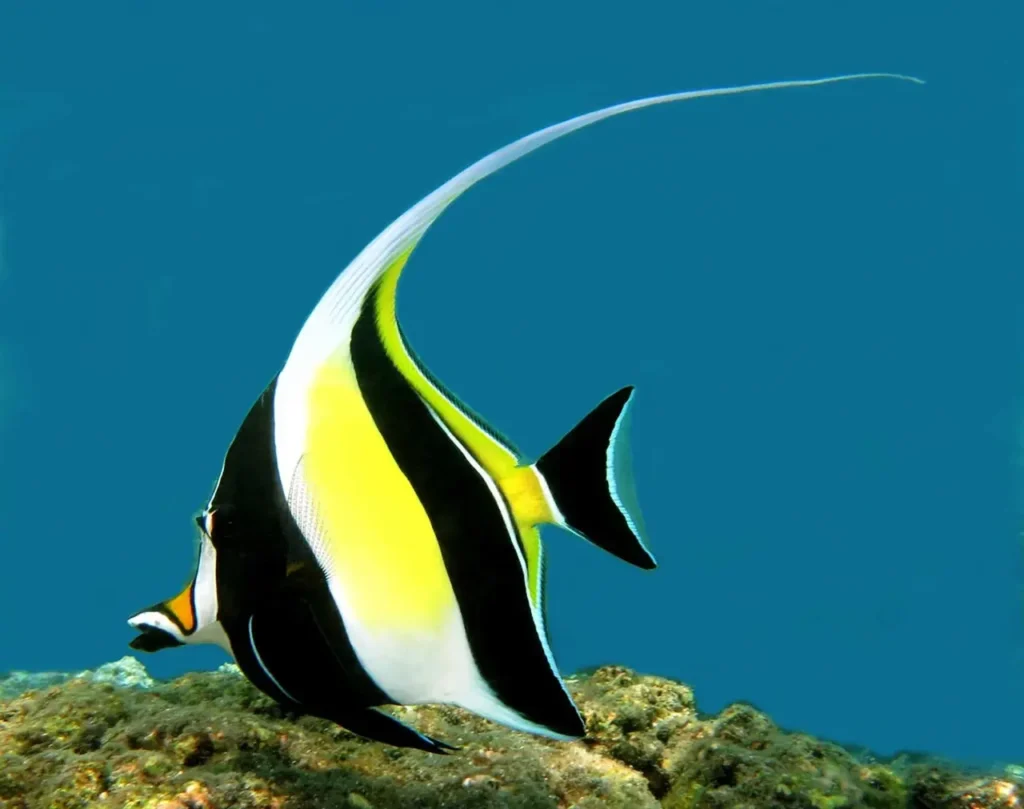



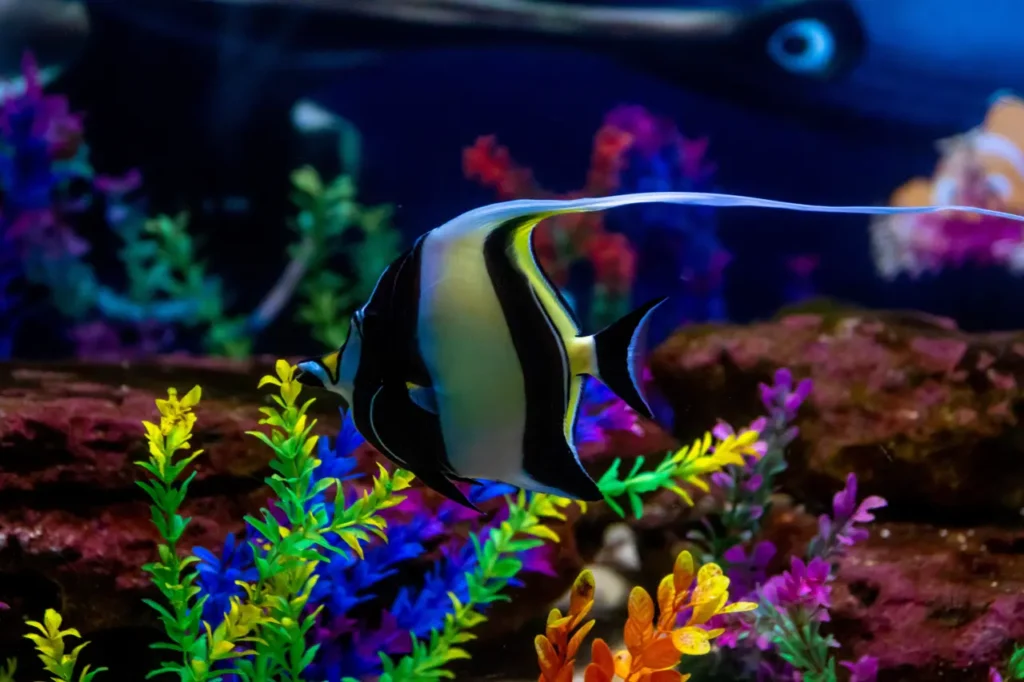
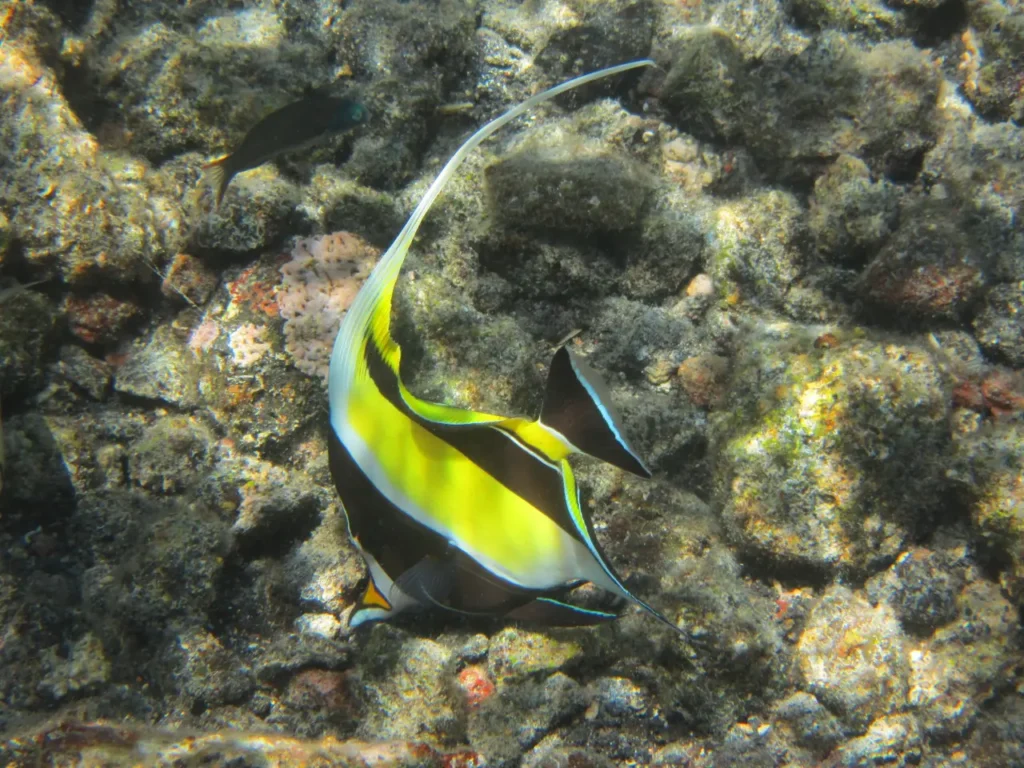
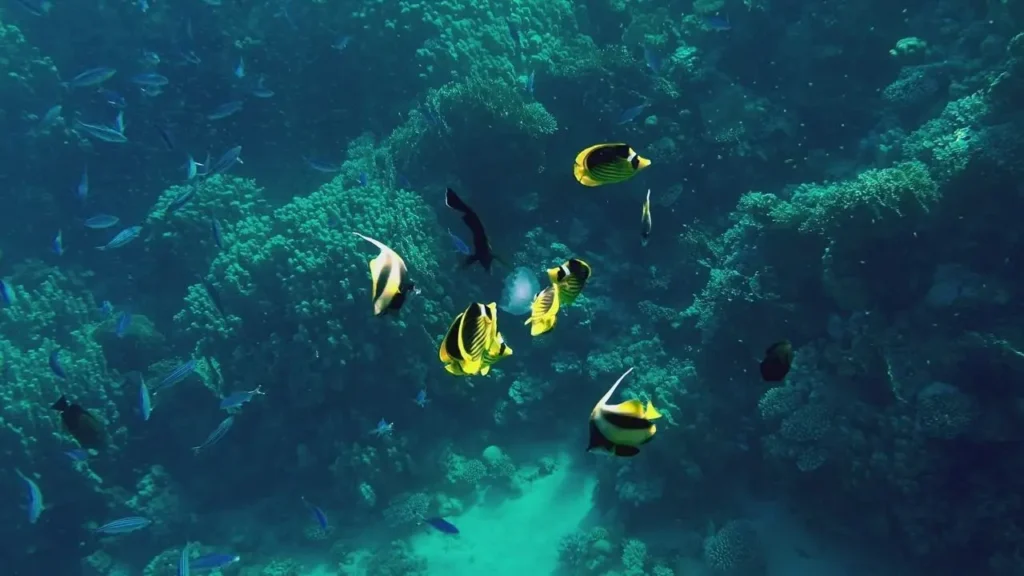

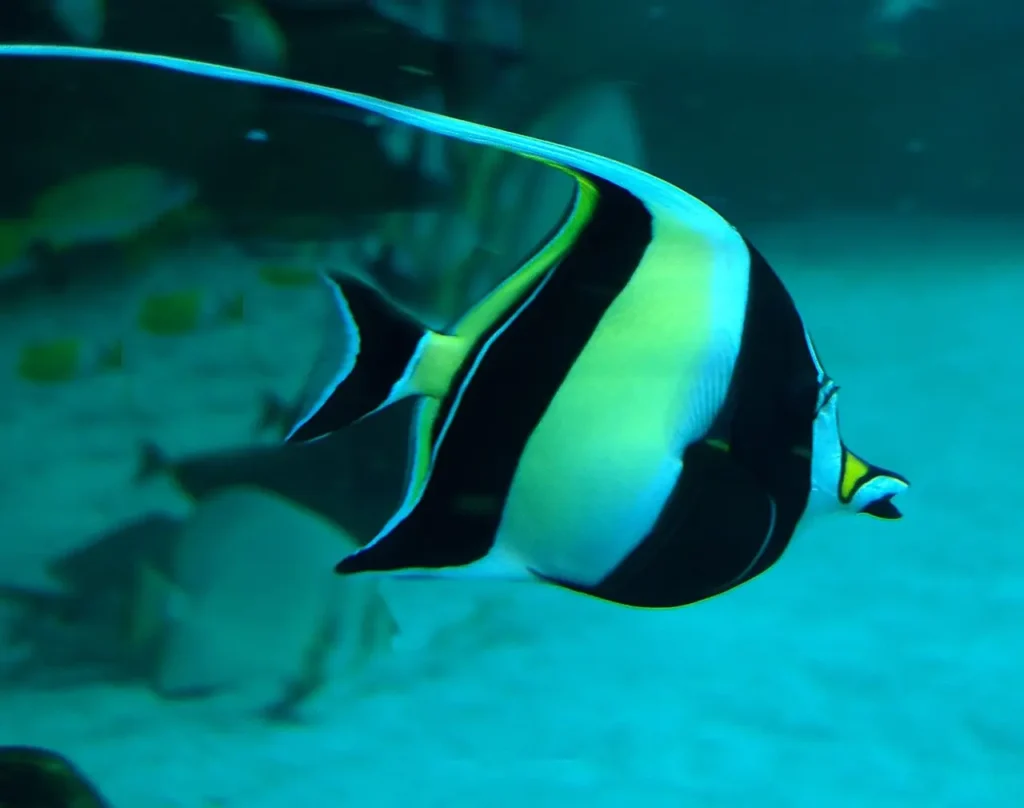





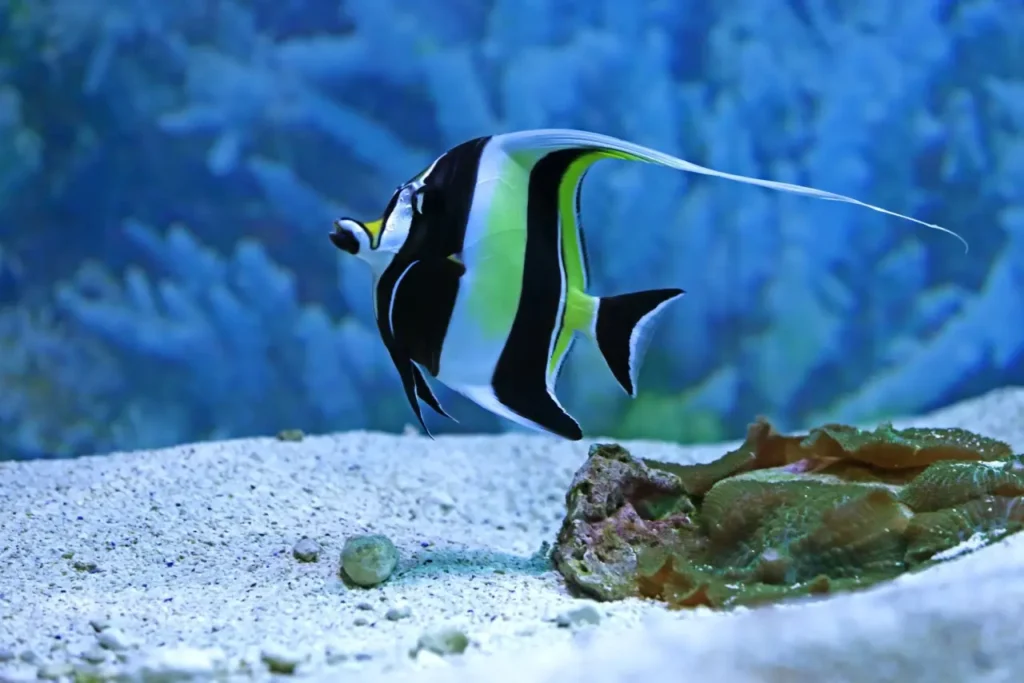
Appearance and Unique Features
The Moorish Idol stands out with its elongated body, compressed shape, and prominent dorsal fin. Its most recognizable feature is the long, white, sickle-shaped dorsal fin, which gives it an elegant and regal appearance. The body is adorned with vibrant vertical bands of black, white, and yellow, resembling a beautiful work of art. The Moorish Idol also possesses a long, tubular snout and a small mouth, which it uses to feed on various organisms in its habitat.
Habitat and Distribution
Moorish Idols are native to the coral reefs of the Indo-Pacific region, including the Red Sea, the Maldives, the Great Barrier Reef, and the Hawaiian Islands. They are commonly found in areas with clear, warm waters, abundant coral formations, and a rich diversity of marine life. These fish inhabit reef slopes, channels, and lagoons, often venturing into shallow waters close to the surface.
Ecological Role and Feeding Habits
Moorish Idols play a crucial role in coral reef ecosystems. They are primarily herbivorous, feeding on algae, coral polyps, and other small invertebrates. Their specialized mouth and snout allow them to pick at and scrape algae from the surfaces of rocks and corals. By consuming algae, they help maintain a balance in the reef ecosystem and prevent excessive algae growth that could smother corals.
Reproduction and Behavior
Moorish Idols are known to form monogamous pairs during the breeding season. They engage in elaborate courtship displays, swimming together in synchronized patterns and engaging in fin-to-fin contact. After mating, the female releases hundreds of eggs into the water column, which are then fertilized by the male. The eggs hatch into transparent larvae that drift in the water until they develop into juvenile fish.
Aquarium Care
Due to their captivating appearance, Moorish Idols are sometimes kept in large home aquariums. However, they require specific care and attention to thrive in a captive environment. Keeping Moorish Idols can be challenging, as they have specific dietary requirements and are sensitive to changes in water quality. They need a spacious tank with plenty of swimming space and hiding spots, as well as high-quality filtration and a stable water temperature.
Feeding Moorish Idols in captivity can be demanding, as they primarily feed on live coral polyps and filamentous algae in the wild. Providing a varied diet consisting of high-quality commercial foods, such as flake, pellet, and frozen foods, supplemented with fresh vegetables and marine algae, is essential for their health and well-being.
Conservation and Protection
Moorish Idols face various threats in their natural habitat, including habitat destruction, pollution, overfishing, and collection for the aquarium trade. It is important for divers, snorkelers, and aquarium hobbyists to support responsible and sustainable practices that promote the conservation of coral reefs and their inhabitants. By practicing responsible tourism and supporting initiatives that protect marine environments, we can contribute to the preservation of the beautiful Moorish Idol and its fragile ecosystem.
The Moorish Idol’s enchanting presence and remarkable beauty make it a cherished sight for underwater enthusiasts. With its striking appearance, graceful movements, and important ecological role, this fish serves as a symbol of the delicate and awe-inspiring world that exists beneath the ocean’s surface. As we continue to appreciate and protect the Moorish Idol and its coral reef habitat, we ensure that future generations can marvel at its splendor for years to come.
